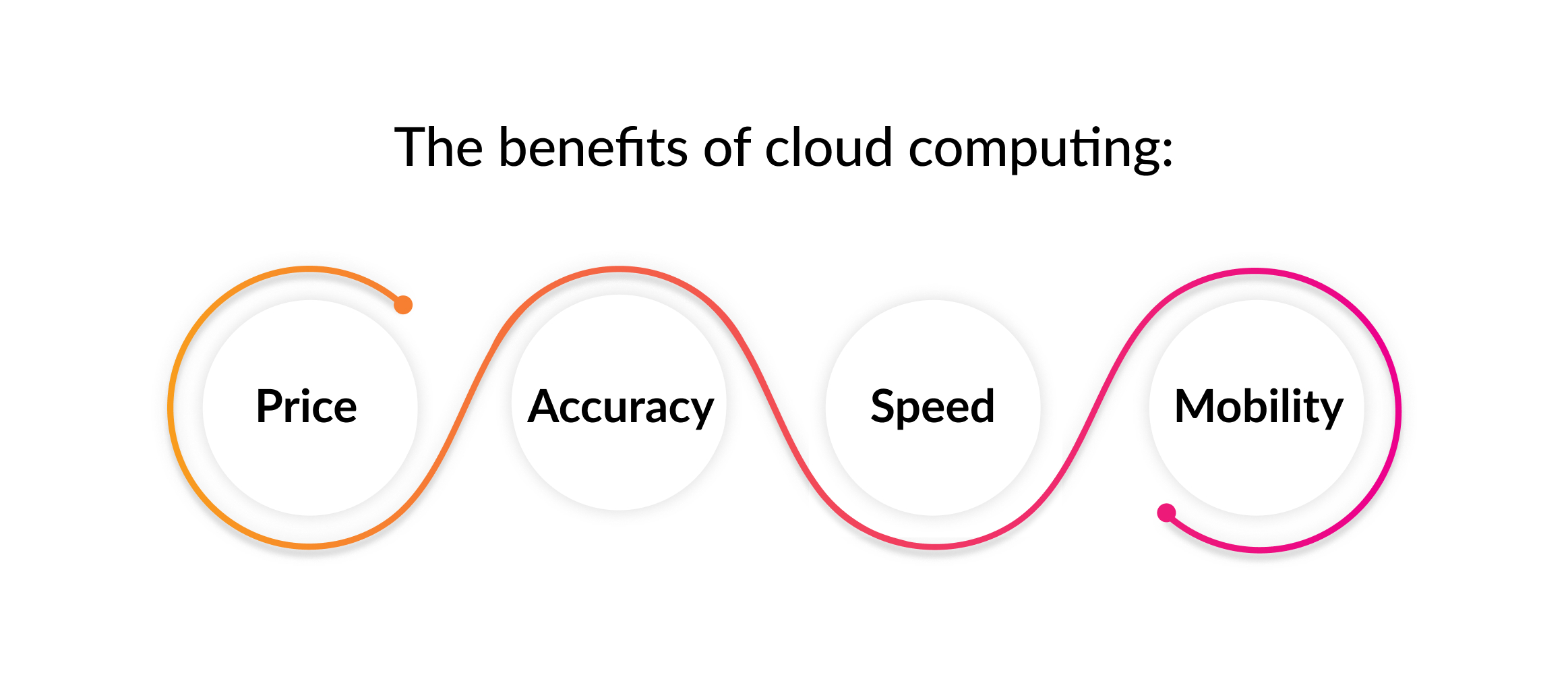Hosting your app should be as simple as possible. Everyone desires a hosting service that makes it simple to deliver features quickly. It should also be cost-effective, allowing you to keep your financial considerations pleased while freeing up resources for development. That is precisely why we want to tell you about Serverless.
The experts at Quintagroup are always eager to help you discover the top serverless specialists. So contact us, and we’ll address all your inquiries.
Computing in the Cloud
The term “cloud computing” has existed since the early 2000s. It describes a network of computers that supply various services over the internet rather than natively; fundamentally, it may be regarded as a metaphor for cyberspace computing services.
When discussing cloud computing, IaaS, PaaS, and SaaS are the most commonly mentioned technologies. People frequently use these names interchangeably because these technologies operate behind the cloud. However, you will discover the difference in this article.
This business model can be applied in various industries, from amusement to medicine. Businesses invest in SaaS development services to create whole new products or to improve and expand on existing ones.
Knowing the essential differences between these technologies is critical to make your business thrive.
Serverless
Developers can create and execute program code using the serverless architecture of computing, which eliminates the need to provide or manage servers or another backend underpinning.
Your company may create and execute applications using a cloud solution without worrying about managing servers. It offers a solution for eliminating worries about server development and upkeep expenses. Instead, it gives flexibility and efficiency, greater freedom to grow, and produce more commercial potential.
A serverless service is any controlled service in the AWS Lambda architecture. No servers need to be set up or maintained by you; AWS will take care of that for you. So it is not a question of choosing between a serverless strategy and a server-based approach when you know more about serverless.

Cloud computing has several benefits, including:
- Price. Just what you utilize will be charged. However, some cloud-based solutions need you to save space (independently of the usage).
- Accuracy. Instead of stressing about the backend architecture supporting a particular function, developers may concentrate on that function. Roles being divided could result in more straightforward code.
- Speed. The time programmers would otherwise spend thinking about predicting and reserving server capacity is now freed up.
- Mobility. Serverless models scale automatically without your help.
IaaS (Infrastructure as a Service)
IaaS is a cloud technology that allows the user to supply loading, saving, connections, and other core computing resources and distribute and execute operating systems and applications. Although clients do not control or administer the fundamental cloud infrastructure, they have control over operating systems, data, deployed applications, and maybe partial control over specific network elements such as host-based firewalls.
On AWS Lambda:
- You rent a server and deploy your operations on it.
- You own the service while you pay for it and utilize it.
- Nobody else has access to that zone.
- Under the shared responsibility model, you are responsible for all the information, facilities, and users you create and internet traffic, patching, and updating.
- AWS is in charge of system maintenance, connectivity, and changes.
IaaS is ideal for small and medium-sized enterprises which lack the technical ability to build up and maintain a server, as well as major corporations that do not want to deal with the burden of managing a server on their own
Rather than investing much money in equipment, development, and maintenance, they may concentrate more on their primary business and IT. Security fixes and computer hacker protection are often the service provider’s duty, which requires significant effort, time, and knowledge.
PAAS (Platform as a Service)
Platform as a service (PaaS) enables users to create, operate, and manage apps without worrying about creating and maintaining the architecture traditionally needed for developing and deploying an app.
Thanks to PaaS, particularly for those engaged in the web-based app and software development, businesses can utilize the resources necessary for cross-platform development. In addition, without having to make any direct purchases, development teams can use the tools offsite to accelerate the development process.
By having access to built-in, pre-programmed apps, customers may create their products more quickly and without having to start from the beginning with coding. On AWS, the service provider provides clients with platforms so that they may build apps on them.
Benefits of PaaS
- Cost-efficient and simple management system
- Capability to construct environments that are both extraordinarily scalable and accessible.
- Reduced need for infrastructure administration and monitoring, which saves time and money.
- Support for automation that decreases the software development lifecycle’s workload.
- Heightened security.
- More adaptable pipeline for creation and implementation
SAAS (Software as a Service)
Big corporate applications like CRM, ERP, messaging, project management, and many others can be run by consumers without them having to write any code thanks to the software distribution model known as “Software as a Service.” In such a model, a software supplier hosts and delivers features, functionality, and apps to clients through the web.
Some common instances of SaaS are:
- Salesforce CRM (The initial company that created the most well-known CRM as a SaaS service in 1999);
- HubSpot;
- Dropbox Gmail
- Slack
- Zendesk
The Current and Future of Serverless Computing.
By adopting serverless, businesses gain technical, administrative, and financial advantages, but most significantly, they become flexible organizations.
Serverless is an alternative solution. The degree to which these technologies are implemented in any given firm will rely on carefully evaluating the technology’s applicability for specific needs.
The future of serverless technology is promising, and many businesses are investing heavily in the cause.
Serverless technology is undoubtedly here to stay. Therefore, Quintagroup professionals are always happy to give you a hand in finding the best serverless experts.
Just contact us, and we will answer all your questions.
